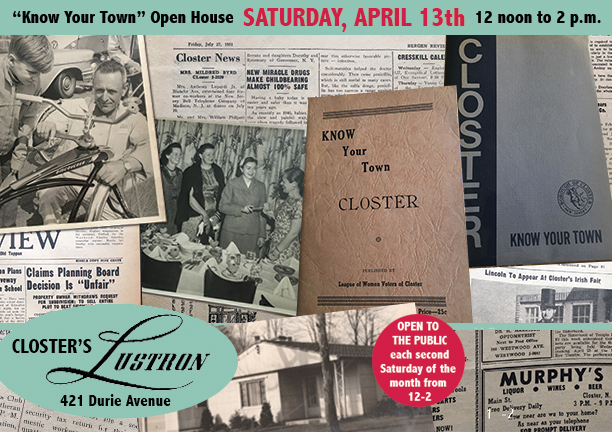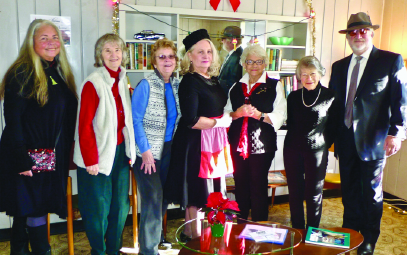
BY SUSAN MCTIGUE
CORRESPONDENT
“Never doubt that a small group of thoughtful committed citizens can change the world; indeed it’s the only thing that ever has,” said anthropologist Margaret Mead.
CLOSER, N.J.—A small corner of the world benefited from that attitude as Closter’s Lustron House hosted its first open house Saturday, Dec. 8. Saved from demolition, thanks to the efforts of many, the steel pre-fabricated house located at the corner of Legion Place and Durie Avenue in Closter was purchased and assembled in 1950 by Harold Hess, a World War II veteran looking for an affordable way to provide a family home.
Fortunately for the Hess family and many others, a new company in Ohio began producing house “packages” made from repurposed steel following the war, and sold them at an affordable price to satisfy the needs and budgets of veterans looking for a way to fulfill their own American Dream.
Although 2,498 Lustrons were manufactured between 1948 and 1950, when the company went bankrupt, only 1,500 survive today across the United States, with just two in Bergen County; the second is a private residence in Alpine.
The Closter Lustron remained a private residence until it was sold to a developer in 2015 and faced almost certain demolition as the borough became the scene of “McMansions” rising in place of more modest homes built more than half a century earlier.
The post-war ranch houses on Closter’s East Hill were quickly being knocked down and replaced with much larger homes that continue to be desirable to a more affluent community.
But while development was proceeding, a small group of people saw the Lustron as a historical gem that deserved to remain a part of the town’s ever-changing demographics, just as Closter’s well-respected 18th century Dutch sandstone residences are prized from a much earlier period of growth.
Former borough historian Patricia Garbe-Morillo championed the cause, getting the Lustron listed on the New Jersey State and National Registries of Historic Places in 2000, and a Bergen County Historical Society blue sign placed at the front of the house in 2001. She was supported by Joel Zelnik, the council liaison to the Closter Historic Preservation Commission, and a firm advocate for local designation.
Jennifer Rothschild, chair of the Friends of the Lustron Committee of the Closter Historic Society, has spent the last few years visiting other Lustron houses from Columbus, Ohio, to Albany, N.Y., where that city has a designated district of Lustron homes. Along the way, she has scoured antique shops and flea markets buying authentic mid-century items to help furnish the Closter Lustron.
“The Hess family was what we call middle-income today, and would not have hired an interior designer to choose their furnishings and accessories,” said Rothschild. “I look for period lamp shades and chairs, books and toys that would have been part of their modest household.”
Nonu Vintage, a shop at 14 West Madison Avenue in Dumont specializing in mid-century modern items, has been very generous in lending and donating items to the Lustron.
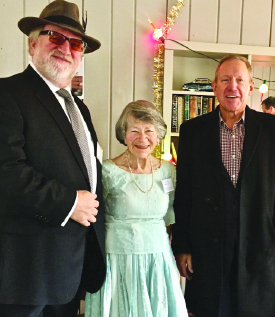
Former Closter Mayor Sophie Heymann has been an integral part of saving the Lustron. She negotiated a plan with the owner-developer to have the Lustron house and property donated to the borough as part of an agreement allowing for the construction of two other homes on the nearby property.
Irene Stella, a member of the Closter Hall of Fame for her accomplishments as the founder of Stella Show Management Co., is president of the Closter Historical Society. She continues to urge the group to stage events for the public as restoration continues, believing that the Lustron will grow as a destination for history lovers throughout the region.
Others in the “group of thoughtful committed citizens” include Bill Dahl, superintendent of Closter’s Department of Public Works, who has devoted countless man-hours to the effort, and former Borough Administrator Erik Lenander, who has used his unique expertise in arranging financing with the Borough.
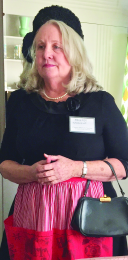
Other core members of the committee include Jayne Rubenfeld-Waldron, Jeanne Stella, Beverly Murray, Bobbie Bouton-Goldberg and Susan McTigue.
In addition, Closter Mayor John Glidden and Borough Administrator Arthur Dolson have worked diligently with the group to resurrect the Lustron House.
None of the ongoing restoration would have been possible without the hard work, professional expertise, and devotion of Michael Pisano, a Closter resident and owner of Mike Pisano Painting. He is the contracted “steward” of the Lustron and has brought the house back to life with sheer elbow grease and love of the period.
“When I’m polishing the walls or repairing molding, I feel a sense of peace and relaxation that the house seems to embody from a period when life was calmer,” said Pisano.
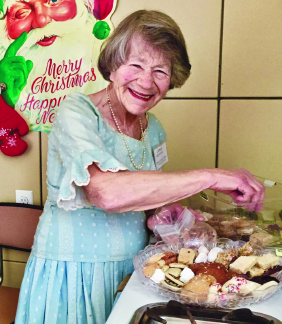
“I play 1950s music as I work and love the feeling. Despite the Lustron being promoted as a House of the Future with lots of new technology, it still brings me back to a quieter time that I hope visitors will enjoy, too.”
Current plans include opening the Closter Lustron House to the public every second Saturday of the month at noon, with special events to be announced.
For further information, visit “Friends of the Lustron House” on Facebook.
Photos by Susan McTigue

